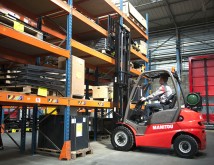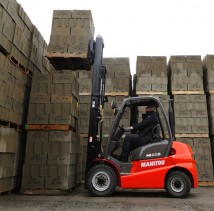Call08 9246 6200
- Monday to Friday
- Parts & Service - 7.30 AM - 4.00 PM
- Hire & Sales - 8.00 AM to 5.00 PM
- After hours support available
One of the most persistent mistakes we see in materials handling is the poor choice of small- to medium- sized forklift. Too often we see operations compromised by a machine that lacks the power or the reach to do the job properly. Only slightly less common is the mistake of choosing a machine whose capacity comfortably exceeds the tasks it’s required to perform, but at the cost of fuel efficiency and close-quarters manoeuvrability.

Typical of the choices managers must make is the excellent Manitou MI range of industrial forklifts, which includes no fewer than 12 models of gas and diesel-powered machines with lift capacity between 1.5T – 3.5T. This article gives some tips that will help managers make no-regrets decisions when choosing a forklift in this range.
This will influence, and in some respects dictate, the type of forklift you choose; its powertrain and tyres.
• Will it be used indoors, outdoors or both?
• Will it be operated on smooth or rough terrain?
• How many hours a day do you plan to use it?
Of course you need to know the height to which your forklift will be required to lift, but you should also determine any height restrictions it will need to clear in the workplace. And you should also identify any tight radius corners the machine will need to negotiate, and select a machine capable of doing so.
Obviously for indoor work an electric forklift poses fewer environmental challenges. Electric machines are more costly to buy than an internal combustion equivalent, but will repay that cost over their lifetime through lower operating costs.
On the other hand, gas or diesel powered forklifts can lift larger loads, more quickly, and do not require charging down-time.

Obviously your forklift must meet your maximum load requirements, but with increased capacity comes increased size, and some loss of agility.
• What is the typical weight the machine will be required to handle?
• What is the maximum weight the machine will be required to handle?
• What are the maximum dimensions of the loads you need to handle?
You should also consider the type of material you are intending to handle. Specialised attachments have been designed to assist many types of material.
If you would like to learn more about choosing the right forklift, call us or send a contact request here.
Notifications